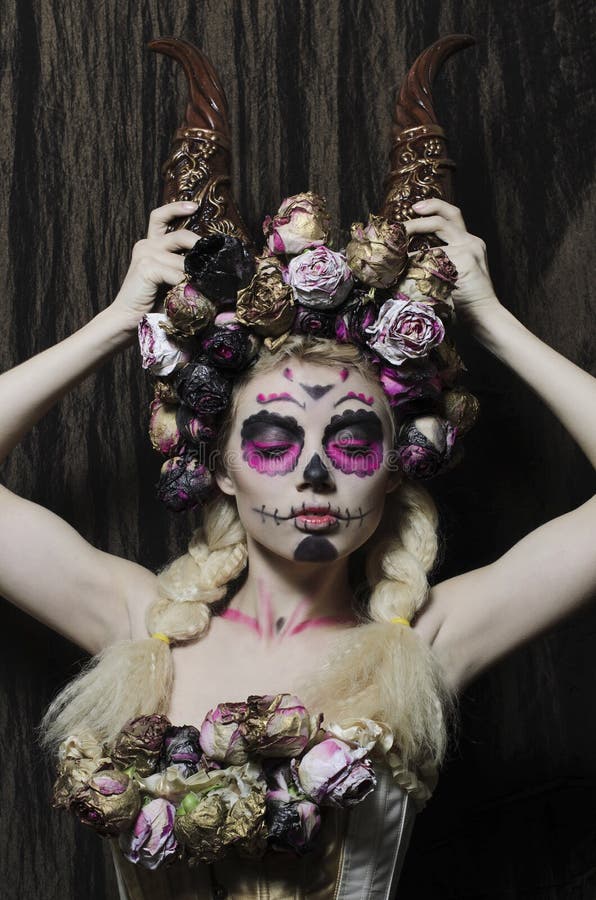
The mural portrays over 400 years of Mexican history and it includes Posada, Frida Kahlo and himself. The name La Calavera Catrina is derived from Diego Rivera’s work Dream of a Sunday afternoon along Central Alameda. Posadas’s most famous etching is of La Calavera Catrina who has become an icon in Mexico representing the Dia De Los Muertos. Calavera etchings were generally of women because in Mexico death is portrayed as a woman (la Muerte). Of course, the Calaveras were usually the servant girl wearing cast-off clothes. Posada was the first to sketch the skeletons wearing contemporary clothes and become part of the day to day scenes’ that portrayed the upper-class Mexican. Meaning of the Dia de los Muertos Calaveras When you buy through links on our site, we may earn an affiliate commission.

La Catrina is the name used by the women of Mexico when they paint their faces to resemble skulls. The skull face paint represents their ancestors who have passed on and celebrates the beauty and necessity of death. This is just one of the many Mexican festivals you will find across the country.Īll over Mexico, people paint their faces as incredibly beautiful skulls to celebrate the Day of the Dead. Dia De Los Muertos is not celebrated on Halloween and it is not tied to this now secular day of trick or treating.

Calaveras means skulls and by extension of course skeletons. There is a long tradition of art depicting skeletons in Mexico. It is important to support our cultural identity rights by purchasing these items directly from an artisan and not from a big corporation.Dia de los Muertos Skulls The Day of the Dead MexicoĬalavera is Spanish for “skull” and in Mexico, it has a much deeper meaning. "It's part of cultural identity and very important to show respect to many folk artists that handmade each element we observe in an altar. "This tradition acknowledges the importance of honoring our ancestors' legacy, their teachings and our duty to perpetuate this community event as part of an organic way to deal with the physical death of a loved one," Vivar said. What Vivar wants to participants to understand is that Day of the Dead is not a Mexican Halloween – regardless of how brands market the holiday. MASA is also facilitating a calavera (skeleton) workshop as part of SparkNight at the Zimmerli Museum on Nov. with a traditional altar exhibit and dance and musical performances. The celebration continues Friday evening from 7-9 p.m.

at CLAC's offices, 172 College Avenue,New Brunswick, led by Lazos America Unida director Teresa Vivar, who will discuss the origins of the sugar skull ( calavera de azucar) tradition in Mexican culture and how it has been adapted in the United States. 4) with two sugar skull craft workshops from 2-3:30 p.m. The holiday revolves around ritual preparations by family to visit the graves of loved ones, the preparation of a home or community ofrenda, or altar, and the laying of marigold flower petals and other handicrafts, said Carlos Fernandez, director of CLAC. 1 and 2, draws on pre-Hispanic Mexican and Spanish Roman Catholic traditions intended to facilitate the return of departed souls to the Earth. “We want to stretch it to as many interested cultures as possible – not just to learn about the holiday, but to enjoy and partake in our traditions.”ĭía de los Muertos, or Day of the Dead, celebrated on Nov. “I want students of both Mexican and non-Mexican descent to learn and have the opportunity to engage with our culture,” said Caballero. In honor of the holiday, MASA is partnering with the Center for Latino Arts and Culture at Rutgers-New Brunswick (CLAC) and the New Brunswick community organization Lazos America Unida to host a Día de los Muertos celebration tomorrow. “Movies like Coco made people more familiar with the holiday, but they aren’t as familiar with the meaning behind the rituals and the importance of Día de los Muertos in our culture,” said Rutgers-New Brunswick senior and president of the Mexican-American Student Association (MASA), Axel Caballero. Even Ken and Barbie can be seen sporting traditional calaca (skeleton) costumes and Target sells merchandise for the day. Today the holiday’s symbols – especially ornate sugar skull designs – adorn everything from U.S. Once a celebration largely unknown outside of Mexico, Día de los Muertos has gone mainstream in the United States.


 0 kommentar(er)
0 kommentar(er)
